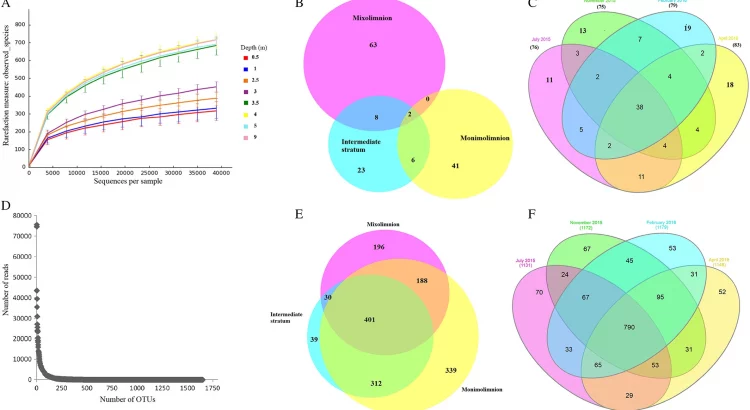Andreea Baricz, Cecilia Maria Chiriac, Adrian-Ștefan Andrei, Paul-Adrian Bulzu, Erika Andrea Levei, Oana Cadar, Karina Paula Battes, Mirela Cîmpean, Marin Șenilă, Adorján Cristea, Vasile Muntean, Mircea Alexe, Cristian Coman, Edina Kriszta Szekeres, Cosmin Ionel Sicora, Artur Ionescu, David Blain, William Kenneth O’Neill, Jessica Edwards, John Edward Hallsworth, Horia Leonard Banciu
Environmental Microbiology (2021) 23(7), 3523–3540
https://doi.org/10.1111/1462-2920.14909
Summary
Ursu Lake is located in the Middle Miocene salt deposit of Central Romania. It is stratified, and the water column has three distinct water masses: an upper freshwater-to-moderately saline stratum (0–3 m), an intermediate stratum exhibiting a steep halocline (3–3.5 m), and a lower hypersaline stratum (4 m and below) that is euxinic (i.e. anoxic and sulphidic). Recent studies have characterized the lake’s microbial taxonomy and given rise to intriguing ecological questions. Here, we explore whether the communities are dynamic or stable in relation to taxonomic composition, geochemistry, biophysics, and ecophysiological functions during the annual cycle. We found: (i) seasonally fluctuating, light-dependent communities in the upper layer (≥0.987–0.990 water-activity), a stable but phylogenetically diverse population of heterotrophs in the hypersaline stratum (water activities down to 0.762) and a persistent plate of green sulphur bacteria that connects these two (0.958–0.956 water activity) at 3–3.5 to 4 m; (ii) communities that might be involved in carbon- and sulphur-cycling between and within the lake’s three main water masses; (iii) uncultured lineages including Acetothermia (OP1), Cloacimonetes (WWE1), Marinimicrobia (SAR406), Omnitrophicaeota (OP3), Parcubacteria (OD1) and other Candidate Phyla Radiation bacteria, and SR1 in the hypersaline stratum (likely involved in the anaerobic steps of carbon- and sulphur-cycling); and (iv) that species richness and habitat stability are associated with high redox-potentials. Ursu Lake has a unique and complex ecology, at the same time exhibiting dynamic fluctuations and stability, and can be used as a modern analogue for ancient euxinic water bodies and comparator system for other stratified hypersaline systems.
